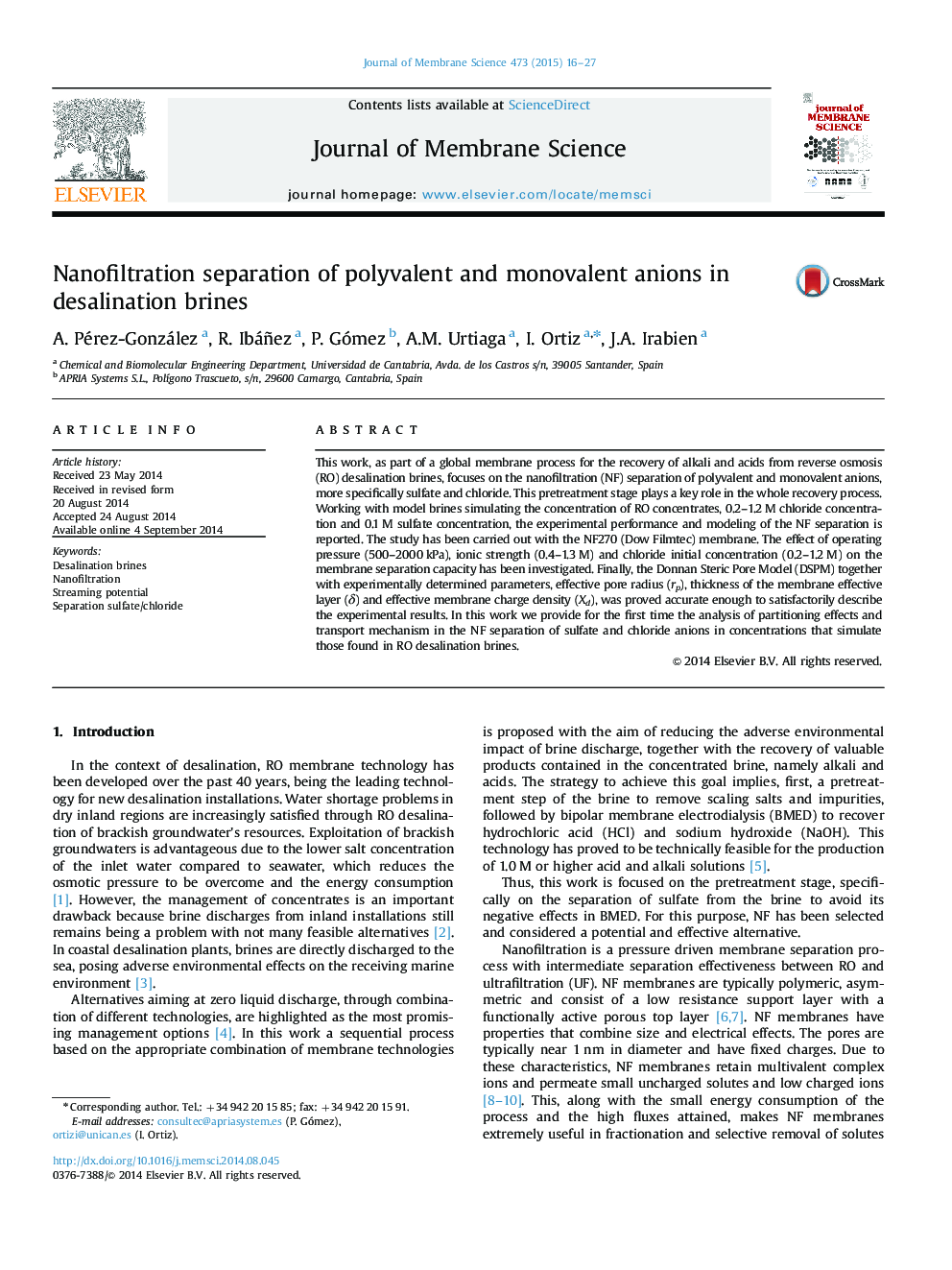| Article ID | Journal | Published Year | Pages | File Type |
|---|---|---|---|---|
| 633358 | Journal of Membrane Science | 2015 | 12 Pages |
•Reverse osmosis (RO) brines as source of valuable compounds.•Nanofiltration for RO brines conditioning before bipolar membrane electrodialysis.•High sulfate/chloride separation efficiency with NF270 membrane.•Donnan Steric Pore Model describes monovalent and divalent anions separation by NF.
This work, as part of a global membrane process for the recovery of alkali and acids from reverse osmosis (RO) desalination brines, focuses on the nanofiltration (NF) separation of polyvalent and monovalent anions, more specifically sulfate and chloride. This pretreatment stage plays a key role in the whole recovery process. Working with model brines simulating the concentration of RO concentrates, 0.2–1.2 M chloride concentration and 0.1 M sulfate concentration, the experimental performance and modeling of the NF separation is reported. The study has been carried out with the NF270 (Dow Filmtec) membrane. The effect of operating pressure (500–2000 kPa), ionic strength (0.4–1.3 M) and chloride initial concentration (0.2–1.2 M) on the membrane separation capacity has been investigated. Finally, the Donnan Steric Pore Model (DSPM) together with experimentally determined parameters, effective pore radius (rp), thickness of the membrane effective layer (δ) and effective membrane charge density (Xd), was proved accurate enough to satisfactorily describe the experimental results. In this work we provide for the first time the analysis of partitioning effects and transport mechanism in the NF separation of sulfate and chloride anions in concentrations that simulate those found in RO desalination brines.
